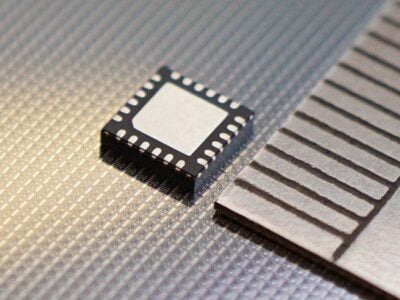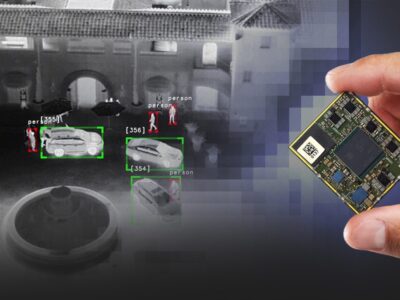
The new SoC, in addition to advanced vision algorithms and sensor data-fusion capabilities, provides protection against potential external wireless attacks, a much needed feature in the era of “Connected Cars.”
The automotive market already has a number of models that come with such driver’s assistance features as automatic cruise control, lane departure, blind-spot detection and road-sign recognition.
The difference Freescale claims is that the new S32V SoC will turn such “nice-to-have” driver assistance features into “more sophisticated co-pilot, safety-critical functions,” explained Matt Johnson, vice president & general manager, automotive microcontrollers at Freescale. In short, the S32V is designed to make safety-critical decisions for drivers so that cars won’t get into accidents, he added.
Psychologically speaking, it might take time for drivers to completely trust cars to take control. But Freescale, in the automotive market for decades, is confident that microprocessors rigorously designed from top to bottom with automotive-grade safety in mind, can provide ECUs that keep cars out of accidents. “We think we can intersect a market that’s transitioning from today’s cars with driver assist features to autonomous cars of the future,” Johnson explained.

(Source: Freescale)
Freescale’s S32V microprocessor is “structurally designed to comply with stringent ISO 26262 functional safety standards,” according to Freescale.Inside the automotive vision SoC is CogniVue’s second-generation APEX Image Cognition Processing technology. The SoC additionally supports the fusion of vision data captured by the S32V device. Fused into the SoC are multiple other data streams, including radar, LiDAR and ultrasonic information to enable optimal resolution and image recognition accuracy, the company said.
The new SoC enables “co-pilot” functions that include autonomous emergency brake, lane-departure correction, pedestrian protection and sensor fusion.

Asked if Freescale’s new SoC takes advantage of ARM’s recently released functional safety documentation, Davide Santo, Freescale’s safety and chassis segment manager, told EE Times, “No. ARM’s announcement was for the Cortex-R5 processor.” Freescale designed its S32V, based on ARM’s original Cortex-A family cores, without leveraging the software, he said. “With 10-years of safety experience, we have a safety process in place that leverages hardware.” Such safety practices include hardware that separates cores into two clusters, allowing independent execution on each cluster.
Other safety features enabled in the SoC include redundant signal paths, software-error checking, hardware-fault detection and hard partitioning allowing the system to safely shut down and perform a controlled reboot without compromising braking or steering, the company explained.
The good thing, said Santo, is that Freescale’s Tier-One’s and OEM customers don’t need to write additional software to achieve functional safety. On the device level, the S32V’s functional safety is developed as per ISO 26262 with target ASIL B.
“We allow our customers to focus on applications, rather than writing more software specific to functional safety,” he added. “Writing less software means that you need to validate less software. That, in turn, leads to faster to the market.”
Vision processor
Freescale’s automotive vision SoC is a solid ADAS solution for its customers, largely enabled by the company’s partners, said Johnson.They include vision IPs from CogniVue, RTOS and tool chain by Green Hills Software, and such critical software as real-time object recognition algorithms to seamlessly detect partial objects, developed by Neusoft Corp.
CogniVue is announcing at the Mobile World Congress the company’s next-generation of AP APEX ICP technology. CogniVue is claiming a 10x performance increase over its current APEX. High-performance vision processing is the name of the game for automotive safety, but the key is to enable it at low power.
CogniVue claimed that the next-gen APEX will enable simultaneous processing of multiple feature detectors (Canny, FAST, SIFT, SURF, etc.), complex classifiers (SVM, CNN, etc.) and motion analysis (trackers, optical-flow, etc.) on multi-camera 2k video streams at a fraction of the power of competing processors.
Security measures against wireless apps
Freescale’s competitors such as Texas Instruments and Renesas have similar ADAS Vision SoCs, observed Akhilesh Kona, analyst, Automotive Semiconductors at IHS Technology. However, Freescale’s S32V stood out to him, because it adds security requirements to wireless applications, Kona said. Indeed, Freescale takes pride in the S32V featuring secure boot, network-grade crypto engines, secure keys, and support for secure hardware extension specifications published by many of the world’s top automakers.
Further, with this level of security, the S32V helps protect against “external attacks and unauthorized access to vehicle-to-vehicle communications,” the company said. Discrete encryption domains provide an added layer of protection within the car’s network. “If a hacker gains access to one node of the car’s system, they cannot access other nodes; hence attacks are effectively isolated and quarantined,” according to Freescale.
Freescale will start sampling S32V in May, with full market availability slated in July. Following the normal full automotive qualification process — which requires testing vehicles over two winters — S32V-equipped cars are expected to be on the market in 2018.
Junko Yoshida is Chief International Correspondent, EE Times
Article by courtesy of EE Times
 If you enjoyed this article, you will like the following ones: don't miss them by subscribing to :
eeNews on Google News
If you enjoyed this article, you will like the following ones: don't miss them by subscribing to :
eeNews on Google News




